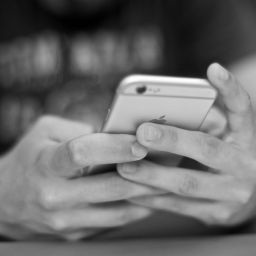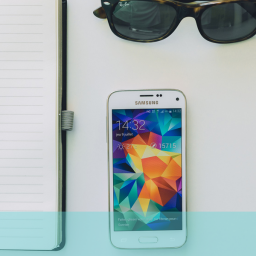
Diary studies are a great way to encourage study participants to share information openly and honestly in a way an interview rarely can. With the correct prompts and a chance for open-ended activities, they provide valuable and novel insights into users’ environments and their influences on their everyday lives. More importantly, however, they deliver crucial information about deeper feelings about their needs, hopes, and dreams, as well as their frustrations, shortcomings, and disappointments.
Cultural probes (or design probes) build on the information we get from research participants by making studies more engaging, fun, and interactive. It helps us learn more about users, customers, communities, the marketplace, operational environments, relationships with people, brands, and products, and, most importantly, how they make our participants feel, uncovering their deepest thoughts.
What are cultural probes?
Let’s break it down: ‘cultural’ relates to various situations and practices, including societal, community, or creative behaviours. The word ‘probe’ suggests a deeper investigation, and that’s precisely what this area of UX research delivers.
We’re digging deeper into our users’ environments and how they feel throughout the study. With defined goals, we can ask guided questions at specific times about where our participants are, how they feel, what they need, and what would make their lives better.
A deeper insight into users’ lives for a better understanding
We generate more context-rich insights and observations using cultural probes, and that’s down to the playful way they add to our diary studies.
Cultural probes offer a more media-based representation of the situation to encourage deeper insights. How? To make a diary study more creative, researchers provide additional tools designed to stimulate engagement and provide rich information about their surroundings and environment. They introduce various tasks that use creative methods and, in many cases, gamify the process.
A cultural probe kit will often come as a package that includes pencils for sketching, a disposable camera to capture places and activities, a media diary to contain them, postcards, maps and environment layouts, stickers, and even rewards that tie into the tasks outlined in the diary studies.
Digital or analogue – or both?
A tangible, physical pack encourages participants to move away from screens, adding novelty and a chance to be more creative, promoting better concentration and less likelihood of digital distractions (such as the constant pull of notifications).
A physical, cultural probe kit is tactile and intriguing and a welcome change to users’ expectations of on-screen questionnaires or video interviews. While snapping away with a disposable camera may be fun, novel, and inspire creativity—and even deeper thinking—utilising the latest technology, digital platforms, and mobile phone cameras makes it easier for participants to collect information and return their findings.
Conducting global UX studies requires researchers to explore the legal, ethical, and confidentiality expectations of the countries they work with. Many digital platforms and products lend themselves to cultural probes, given the issues researchers may have with delivering and collecting physical packages. Online diary studies, digital research platforms, and mobile ethnography apps can all help deliver long-distance and overseas studies.
Some studies will be better suited to one form over the other. Yet, there are situations where researchers can make the most of those different ways, combining them for the most practical and inspirational data.
Why use cultural probes?
- To provide deeper insights into the participants’ environment.
- To uncover details of feelings, hopes, aspirations, and ambitions.
- They put participants into the right mood and frame of mind to reveal more about themselves.
- They create a creative, open, and honest atmosphere.
- They’re motivational.
- They provide a range of relevant starting points for deeper discussions and follow-up in-depth interviews or focus groups.
Cultural probes allow us to gather more context about how users feel about and interact with their environment. While displaying their surroundings, they tell you about the good and the bad, how their reflections and feelings affect their decisions, and what they wish was different to present better options and practices for the future.
There are myriad ways to learn from study participants. Typically, interviews allow us to ask about what they think; observational studies show us what they do, yet more generative techniques like diary studies and cultural probes provide access to how users feel and what they dream about. It’s by delving into these veiled avenues of latent knowledge that stricter, more rigid lines of questioning don’t cater so well.
Cultural probes and how to choose your ideal research methods
With UX design and research, we’re primarily concerned with human-computer interaction. However, by understanding more about our users and how they operate in their daily lives delivers latent information about who they are as people. This untapped information allows us to build a bigger picture of our subjects, enabling us to understand what wouldn’t just satisfy them but delight them.
Cultural probes can include anything that encourages study participants to engage fully with their environment and show us how it makes them feel. The ideal probes will present the information and insights that align with your goals.
- Writing stories and narratives around processes, journeys, actions, or operations.
- Drawing pictures and illustrations that reveal more about how they feel than a photograph.
- Mapping out routines and matching the steps to specific feelings.
- Creating maps or layouts of indoor and outdoor areas, including notes about how specific places or interactions within them made them feel.
- Taking photographs or creating a photo album that tells a story, reveals, or can document the meaningful challenges your assignments are designed to uncover.
- Using a voice recorder to log discussions and conversations (where appropriate and with the correct permission).
When choosing your ideal options, please remember that diary studies and cultural probes are primarily concerned with uncovering your participants’ hopes, dreams, feelings, and ambitions instead of the facts, figures, or failings that interviews and questionnaires typically expose.
How to conduct a cultural probe study
There are as many ways to conduct a cultural probe study. As with every type of research, a directed design process is essential. We must carefully consider our goals, suitable participants, and how to glean the most valuable information from the process.
1. Define your research goals
Your goals will depend on your position in the research process and how you plan to use the results from your study. The design team must understand the stakeholders’ needs to deliver the inspirational data that drives upgrades, new features, and solutions that heighten the UX of their products.
2. Consider your research participants
Whose opinions do you want and why? Considering your key user personas and even some less obvious options further down the chain can provide varying opinions and observations. Also, given the qualitative nature of cultural probe studies, what will be your ideal participant pool size?
3. Planning and preparation
Careful planning is essential. What are the best cultural probes for your study, and how will you utilise them to their best effect? The tasks and instructions in your diary studies must be fun and engaging to encourage participants to explore their environment more perceptively and to open up about how it truly makes them feel.
Testing your studies and cultural probes won’t just let you know that they function as anticipated, but testing them on your colleagues or friends can often uncover insights and inspirational data you hadn’t considered, driving different avenues or interactions with your studies.
4. Deliver your cultural probes to your participants
Whether you’re delivering them by hand or post, include information about returning the completed study (including return packaging or setting a date for an in-person collection) and who they can contact with queries and questions or if they need replacement or additional items.
5. Gather the resulting materials and analyse your findings
With a host of qualitative information to scrutinize, you’ll be looking for clusters of relevant data, patterns between users, and the key points that will open discussions and in-depth interviews around the forward movement of your products.
6. Schedule follow-up interviews to validate results and explore the best next steps
While not always necessary, the data uncovered by cultural probes can lead to additional exploratory conversations into new solutions and how your participants might receive them.
7. Prepare your results and deliver presentations
With an array of new and valuable data, it’s time to present it to the stakeholders and design team. Your summary and conclusions will help them drive the project forward and guide them to create the ideal solutions in context with your findings.
Summary
Cultural probes are a great way to uncover more about how your users feel, their aspirations and hopes, and what would constitute a better life for them. Exploring their environment gives us previously hidden insights into what they’re most interested in and how they engage with their different domains.
The data uncovered by the UX researcher allows designers to explore and deliver new and better-aligned solutions and practices. Without a doubt, diary studies are an incredibly valuable tool within UX research, yet by introducing cultural probes to those studies, we can create more engaging ways for participants to explore their environments, resulting in ways of seeing and thinking they might not have previously considered.
Our user research experts are available to help you get closer to your customers. If you would like to arrange a no obligation call, get in touch by emailing us at hello@ux247.com or share your requirement using the form below.








